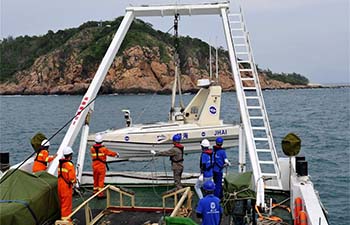CHICAGO, Oct. 23 (Xinhua) -- The lifetime toxic chemical releases associated with coal-generated electricity are 10 to 100 times greater than those from electricity generated with natural gas obtained via fracking, a University of Michigan (UM) study shows.
The study comparatively analyzed the harmful health effects of electricity produced from shale gas and coal. It looks at the amount of toxic chemicals released into the air, soil and water during the resource extraction and electricity generation phases and concludes that the potential human health impacts of electricity from coal are much higher.
To calculate the health impacts of particulate matter from power plants, the researchers collected emissions data from 23 natural gas and 13 coal-fired power plants in Pennsylvania. Data from 2,900 hydraulically fractured wells in the state were used to estimate potential releases of fracturing fluid chemicals and wastewater.
Two different assessment methods were used to estimate health impacts. Various statistical tests were conducted to verify the results, suggesting 90 percent confidence in the overall finding that the human toxicity impact (HTI) of shale gas is lower than the HTI of coal.
The combination of horizontal drilling and hydraulic fracturing, have helped unlock vast stores of natural gas in shale formations in recent years. While creating a boom in some parts of the country, increased shale-gas production has also led to concerns over potential contamination of drinking water and possible human health impacts related to hydraulic fracturing.
The findings suggest that as the U.S. energy market continues to shift from coal to natural gas, the overall "toxicity burden" of the electricity sector will decrease, said study corresponding author Shelie Miller, an environmental engineer and an associate professor at the UM School for Environment and Sustainability's Center for Sustainable Systems.
The study has been published online in the journal Environmental Science & Technology.
















